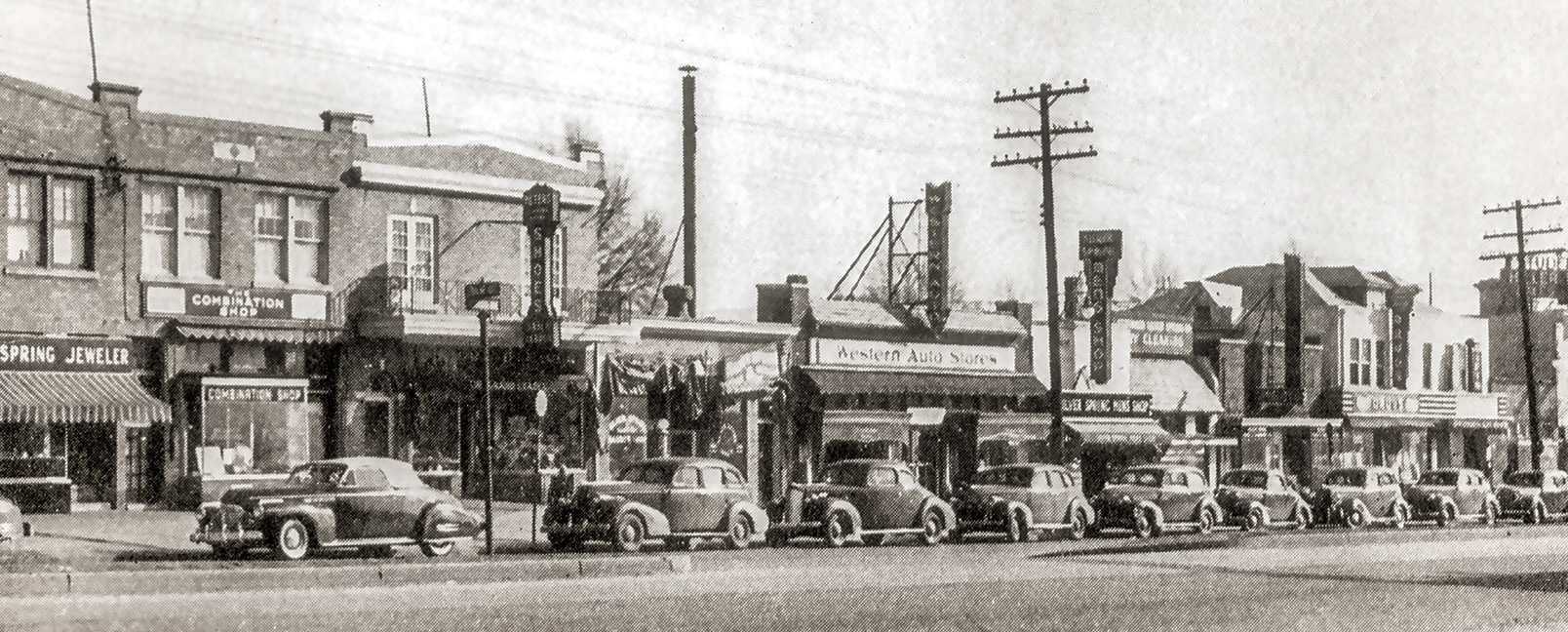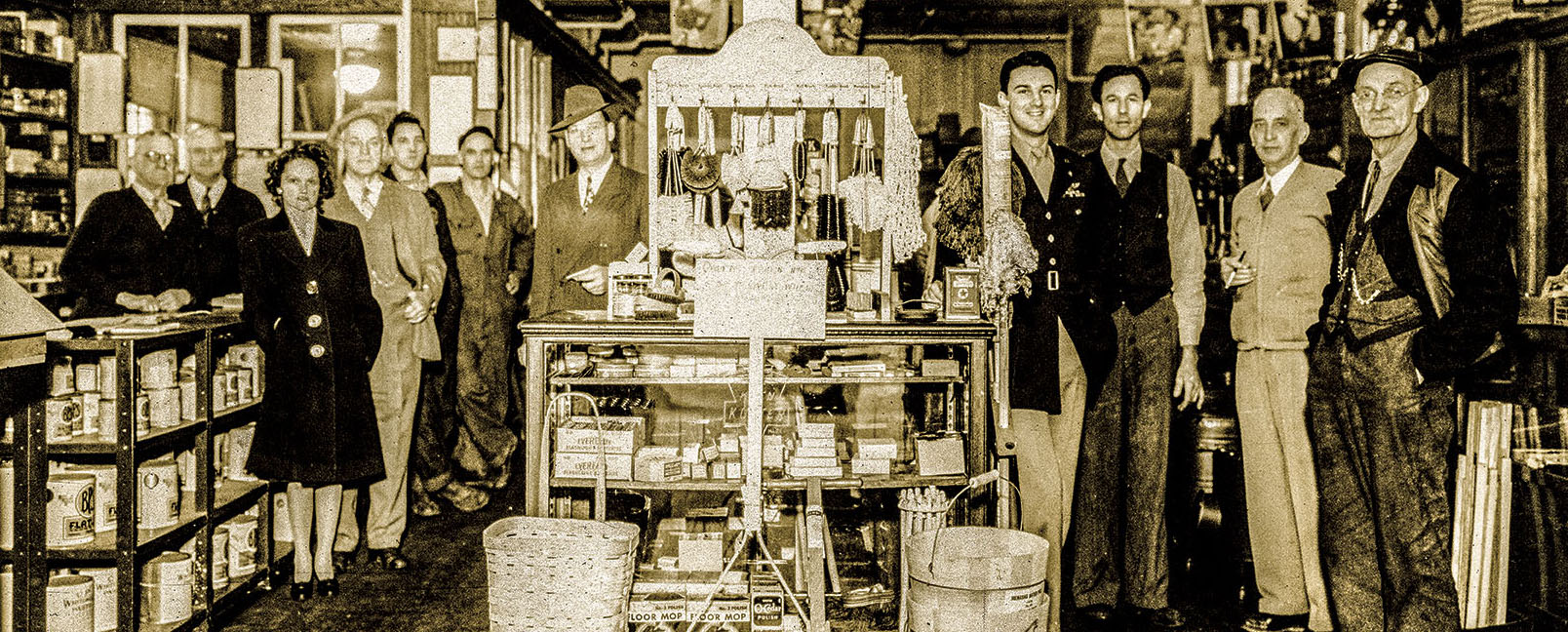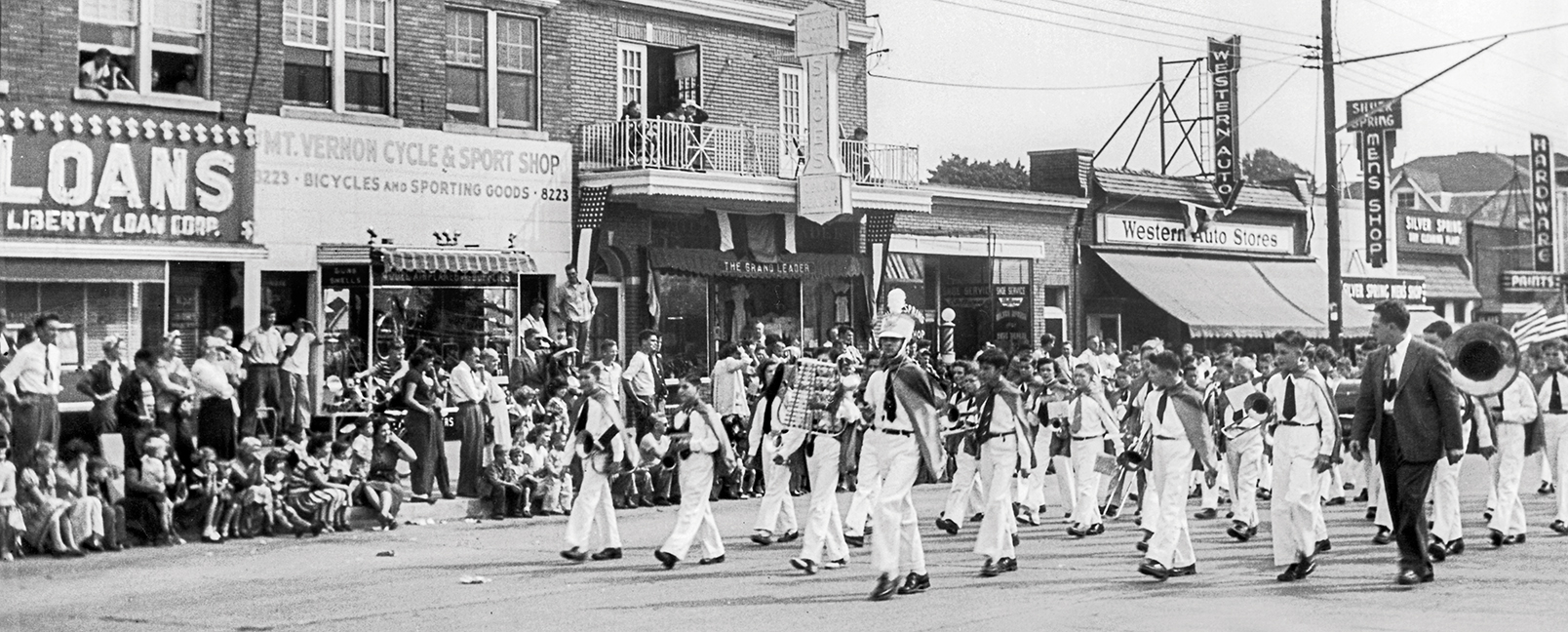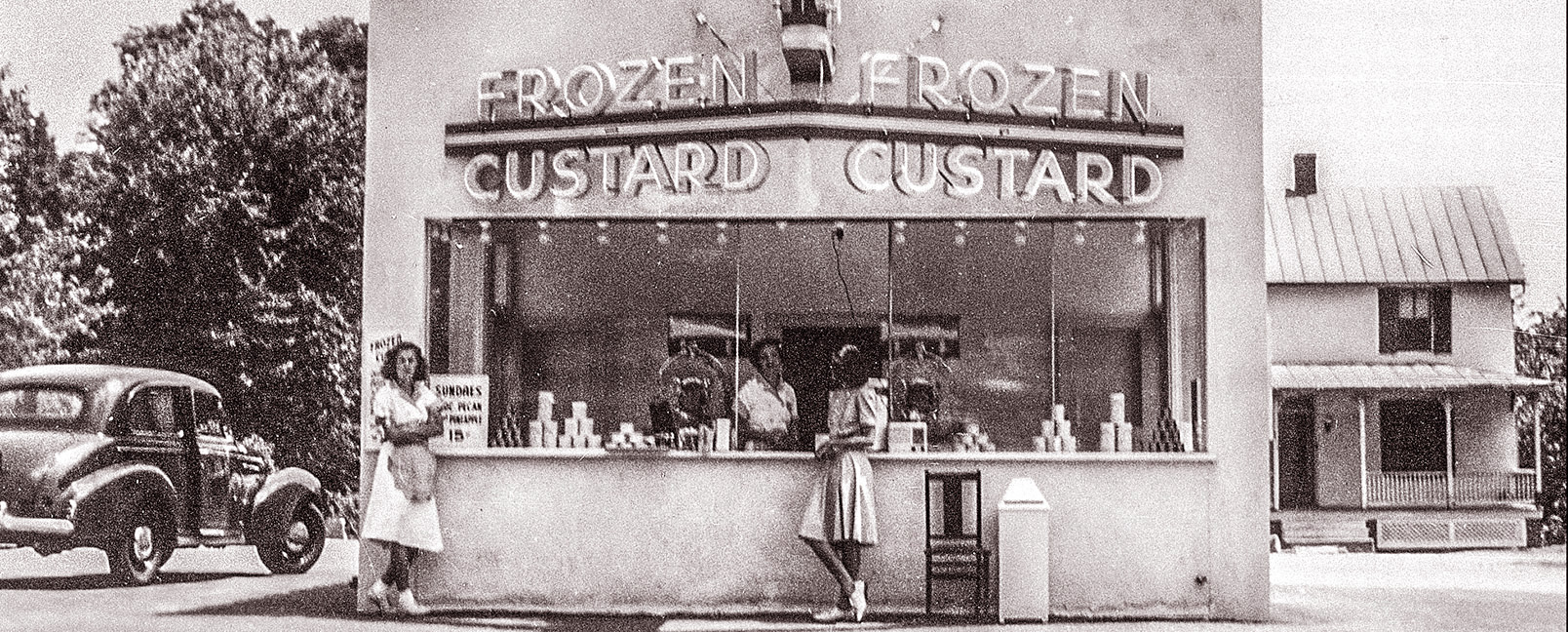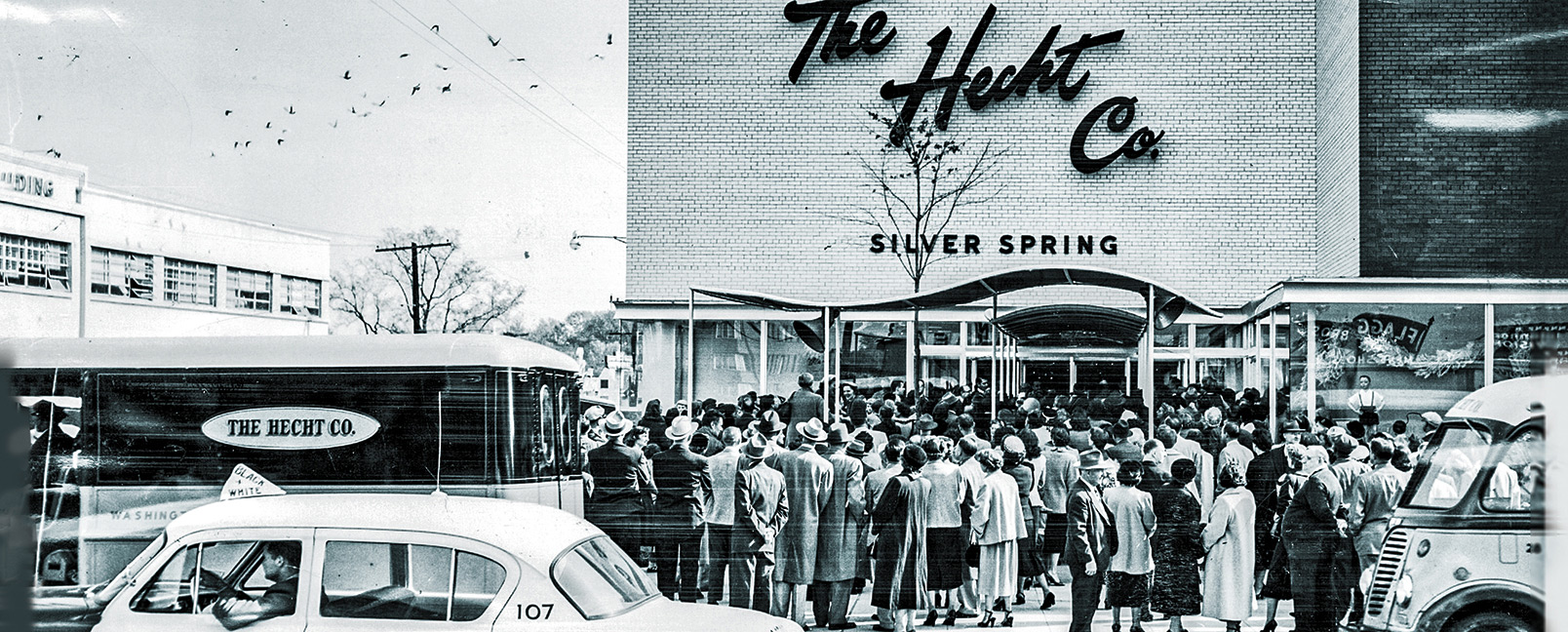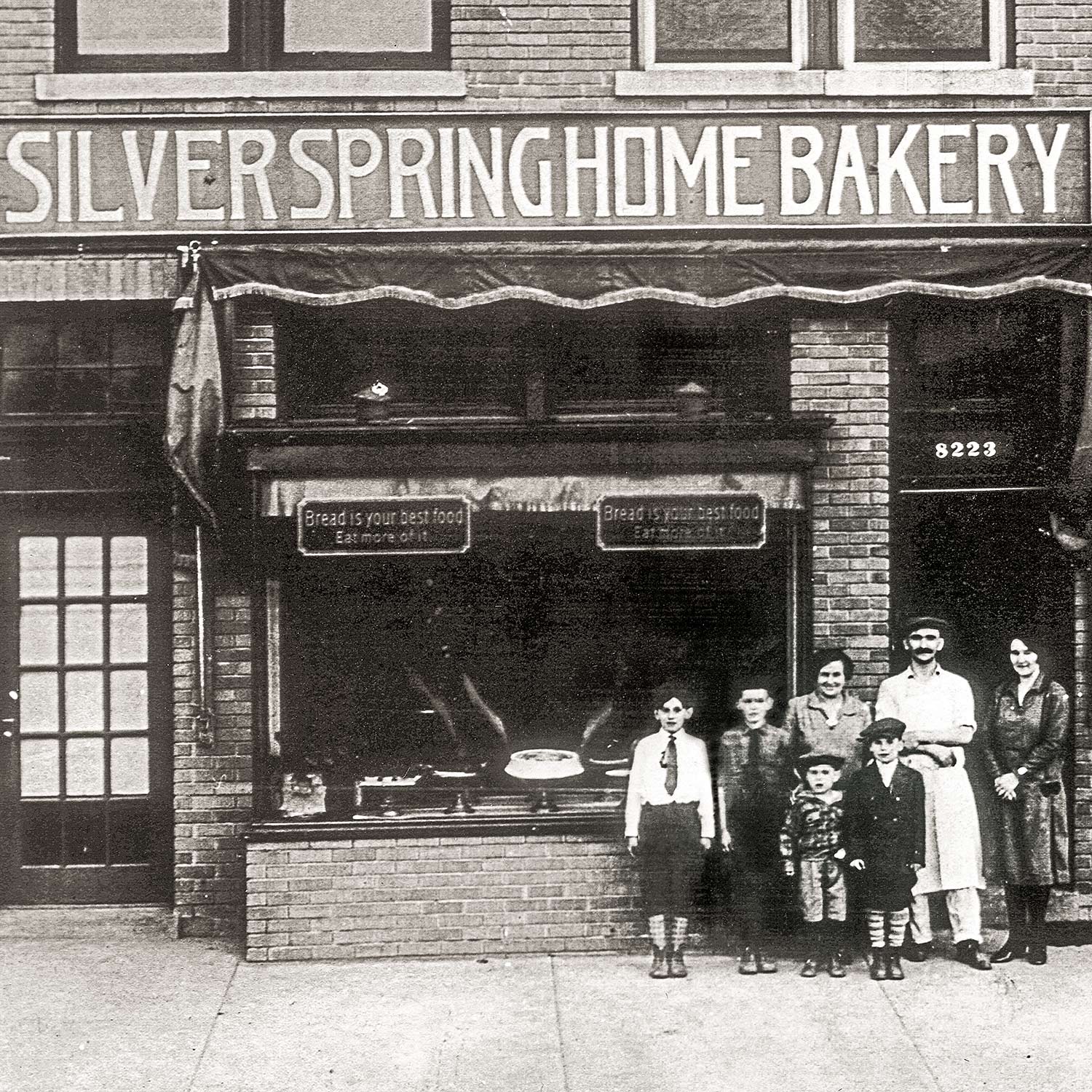
First glimmer, 1800s
From Sparkling Spring to Community
In the 1830s, at the crossroads of today's Colesville Road and Georgia Avenue, a village named Sligo was established by Chesapeake & Ohio Canal workers from County Sligo, Ireland.
Georgia Avenue was established in the mid-19th century as the Seventh Street Pike, a dirt toll road connecting Washington City to Brookeville, Md. It was renamed around 1906 to appease Senator Augustus Octavius Bacon, Democrat from Georgia, who was unhappy with the location of the street then designated for the state of Georgia (now Potomac Avenue SE & SW).
Colesville Road was built in 1864 as the Ashton, Colesville, and Sligo Turnpike and is today part of U.S. Route 29.
In 1840, U.S. presidential advisor Francis Preston Blair discovered a mica-flecked spring while riding his horse Selim. It inspired the name of Blair’s estate, "The Silver Spring," constructed in 1842 near the spring.
Silver Spring’s original Baltimore & Ohio Railroad station, built in 1878, formed the nucleus from which today’s community radiated. Many of these early-to-mid 20th century buildings still grace Colesville Road, Georgia Avenue, and their side streets. Explore the area and discover the fascinating history of the pioneering entrepreneurs, businesses, and institutions that developed our vibrant and diverse community.
Follow the Trail
Georgia Avenue
Our heritage marker trail begins just north of the railroad bridge and continues north.
We all scream for Ice cream
From coal to horse feed to ice cream, a variety of products have been sold from the corners of Georgia and Sligo avenues. The earliest documented business was Wilkins & Jordan, established in 1901 and selling flour, feed, wood, coal, and more, “…when there was but one other house in sight.”
This intersection was also the home of the town’s first bank in 1910, the Silver Spring National Bank, and newspaper in 1928, The Maryland News — traditional institutions required for a community to grow and prosper.
'Most lonesome spot'
In 1912 John H. and Thomas Hunter opened Hunter Bros., a hardware and farm implements business, on what John described as “the most lonesome spot between Glenmont and the city of Washington.” Housed in a two-story wood frame structure, the hardware business had earlier been owned and operated by James H. Cissel, a co‑founder in 1910 of the Silver Spring National Bank.
Family Business
Residential homes on the east side of Georgia Avenue gave way to development pressure in the mid-1920s. In 1926, three adjoining, two‑story brick buildings were completed at 8223-25-27 Georgia Avenue. Among the first businesses (and families, who lived upstairs) to move in was Richard J. “Pop” Dietle’s Silver Spring Home Bakery at 8223. That shop closed in 1936, but a second bakery the family had opened in 1930 — a mile and a half away on Seminary Road — became Dietle’s Tavern in 1934. It operated until 2003.
Harry F. Duncan poses with a model of his flagship restaurant, Little Tavern #1, built in 1938 at 8230 Georgia Avenue. 1972 Photo by Wellner Streets, Courtesy DC Public Library, Star Collection, © Washington Post
From lumber to Lyrics to lunch
The seminal role in the growth of Silver Spring transpired from the southwest corner of Georgia Avenue and Ripley Street, beginning in 1922, by Silver Spring Building Supply Co. and North Washington Realty Co. Later, from 1970 to 1987, the building was home to Track Recorders. Artists who recorded here include Linda Ronstadt, Marvin Gaye, Gloria Gaynor, and Peaches and Herb.
Little Tavern #1 opened on the opposite side of Ripley Street in 1938, specializing in 5¢ little hamburgers. Although its civic-minded founder, Harry F. Duncan, spearheaded the establishment of a Silver Spring branch of the Boys’ Clubs of America, his restaurants didn’t allow sit-down service, only carry-out, for African-Americans until a Maryland court ruling in 1962.
Bank employees and curious bystanders are shown milling about following a bank robbery in this Oct. 27, 1928, Evening Star photo. Courtesy Washingtoniana Division, DC Public Library
Bank Heist!
Gunshots rang out on Georgia Avenue in 1928 when Silver Spring’s first bank robbery occurred at the corner of Oak Street (today’s Bonifant Street). The Silver Spring National Bank had moved here in 1925 from the corner of Sligo Avenue to make way for construction of the Georgia Avenue underpass of the B&O Railroad. This block was also home to the SECO Theater, which opened in 1927 and became Roth’s Silver Spring (1953 - 1991), and, in a neighboring storefront, Dale Music, which serenaded Silver Spring from 1950 to 2014.
Velatis caramels are sold here now, but in 1943 this was a bank. “Back the Attack” was a WWII victory exhibit sponsored by The Washington Post and held on the grounds of the Washington Monument. Photo by Nellie Hewitt Stinchcomb
brick doesn’t burn
Brick buildings aren’t as likely to burn, so pose a lower risk for property insurers. The majority of buildings on Georgia Avenue between Wayne and Eastern avenues were built of brick in the first half of the 20th century, and many of these one- to three-story buildings are still in use nearly a century later. One is the 1937 Georgian Revival-style structure built as a post office at 8412 Georgia Avenue—the first Federal building to be built in Montgomery County—which was home to a mural (now on display at the Silver Spring library) showing the intersection of Georgia Avenue and Colesville Road as it may have appeared during the Civil War.

